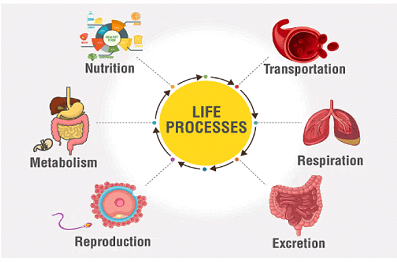The Versatile Nature of Carbon
Types with examples
Introduction
Carbon is often described as the most versatile element in the periodic table. This versatility is responsible for the vast number of carbon compounds that exist—estimated to be over 10 million! In this blog post, we will explore why carbon exhibits such remarkable versatility and how this property makes it the backbone of organic chemistry and life itself.
The Basis of Carbon’s Versatility
1. Electronic Configuration
Carbon (atomic number 6) has the electronic configuration 1s2 2s2 2p2. With four valence electrons, carbon can:
- Share these electrons to form four covalent bonds
- Achieve stability by completing its octet through sharing instead of transferring electrons
2. Tetravalency
Carbon’s ability to form four covalent bonds (tetravalency) is crucial to its versatility. These bonds can be arranged in a tetrahedral geometry, allowing carbon to connect with various elements in three-dimensional space.
Key Concept: Carbon’s tetravalency allows it to form stable compounds with many elements, including hydrogen, oxygen, nitrogen, sulfur, and even other carbon atoms.
3. Catenation
Catenation is the ability of an element to form bonds with atoms of the same element, creating chains of varying lengths. Carbon excels at catenation due to:
- Strong carbon-carbon bonds (C-C bond energy: 348 kJ/mol)
- Ability to form single, double, and triple bonds with other carbon atoms
- Capability to form straight chains, branched chains, and rings
No other element demonstrates catenation to the extent that carbon does, which explains the enormous number of organic compounds.
Carbon’s Bonding Versatility
Types of Bonds Formed by Carbon
| Bond Type | Description | Examples |
|---|---|---|
| Single Bonds (C-C) | One shared pair of electrons | Ethane (C2H6) |
| Double Bonds (C=C) | Two shared pairs of electrons | Ethene (C2H4) |
| Triple Bonds (C≡C) | Three shared pairs of electrons | Ethyne (C2H2) |
| C-H Bonds | Carbon-hydrogen bonds | Methane (CH4) |
| C-O Bonds | Carbon-oxygen bonds | Alcohols, Carboxylic acids |
| C-N Bonds | Carbon-nitrogen bonds | Amines, Amides |
Hybridization and Bond Versatility
Carbon can undergo different types of hybridization, which further increases its versatility:
| Hybridization | Geometry | Bond Angle | Examples |
|---|---|---|---|
| sp3 | Tetrahedral | 109.5° | Methane (CH4), Ethane (C2H6) |
| sp2 | Trigonal planar | 120° | Ethene (C2H4), Benzene (C6H6) |
| sp | Linear | 180° | Ethyne (C2H2) |
Exam Tip: Questions often involve identifying hybridization based on molecular structure or predicting molecular geometry based on hybridization. Remember that the type of hybridization determines the geometry of the molecule!
Structural Diversity of Carbon Compounds
1. Chain Structures
Carbon atoms can form open chains of varying lengths:
- Straight chains: Carbon atoms connected in a linear arrangement (e.g., n-hexane)
- Branched chains: Carbon chains with branches (e.g., 2-methylpentane)
2. Ring Structures
Carbon atoms can form closed rings:
- Alicyclic compounds: Non-aromatic carbon rings (e.g., cyclohexane)
- Aromatic compounds: Rings with delocalized π electrons (e.g., benzene)
- Heterocyclic compounds: Rings containing atoms other than carbon (e.g., pyridine)
3. Complex 3D Structures
Carbon’s tetrahedral bonding allows for the formation of complex three-dimensional structures:
- Polymers: Long chains of repeating units (e.g., polyethylene)
- Fullerenes: Spherical structures like C60 (buckminsterfullerene)
- Biomolecules: Complex structures like proteins, DNA, and carbohydrates
Functional Groups and Carbon’s Versatility
Carbon’s versatility is further enhanced by its ability to form various functional groups, which are specific arrangements of atoms that give molecules characteristic chemical properties.
| Functional Group | Structure | Example Compound |
|---|---|---|
| Alcohol | -OH | Ethanol (C2H5OH) |
| Aldehyde | -CHO | Acetaldehyde (CH3CHO) |
| Ketone | -CO- | Acetone (CH3COCH3) |
| Carboxylic Acid | -COOH | Acetic Acid (CH3COOH) |
| Ester | -COO- | Ethyl Acetate (CH3COOC2H5) |
| Amine | -NH2 | Methylamine (CH3NH2) |
Important for Exams: Each functional group imparts specific chemical properties to the molecule. For example, alcohols can participate in hydrogen bonding, while aldehydes and ketones undergo addition reactions. Understanding these properties is essential for predicting reactions and mechanisms.
Isomerism: Another Dimension of Carbon’s Versatility
The versatility of carbon is further demonstrated by the phenomenon of isomerism—compounds with the same molecular formula but different structures.
Types of Isomerism
-
Structural Isomerism
- Chain isomerism: Different arrangements of carbon chains (e.g., n-butane and isobutane)
- Position isomerism: Different positions of functional groups (e.g., 1-propanol and 2-propanol)
- Functional isomerism: Different functional groups (e.g., ethanol and dimethyl ether)
-
Stereoisomerism
- Geometric isomerism: Different arrangements around a double bond (e.g., cis and trans isomers)
- Optical isomerism: Mirror image structures that are non-superimposable (e.g., lactic acid)
Exam Tip: When asked to draw isomers, systematically work through each type of possible isomerism for the given molecular formula. Start with structural isomers, then check for possible stereoisomers.
Carbon’s Versatility in Biological Systems
The versatility of carbon makes it uniquely suited as the foundation of biological molecules:
1. Carbohydrates
Carbon chains with hydroxyl groups that serve as energy storage and structural components (e.g., glucose, cellulose).
2. Proteins
Polymers of amino acids connected by peptide bonds, where carbon’s ability to form complex 3D structures enables protein folding and diversity of function.
3. Lipids
Hydrophobic molecules like fats and oils that serve as energy storage and cell membrane components.
4. Nucleic Acids
DNA and RNA, which contain carbon in both the sugar backbone and the nitrogenous bases, enabling genetic information storage and transfer.
Key Takeaway: The diversity of carbon-based biological molecules allows for the complexity needed for life. This is only possible because of carbon’s versatile bonding capabilities.
Industrial Applications of Carbon’s Versatility
The versatile nature of carbon has led to numerous industrial applications:
1. Polymers and Plastics
Carbon’s ability to form long chains is exploited in the production of polymers like polyethylene, PVC, and nylon.
2. Pharmaceuticals
Most drugs are carbon-based compounds designed to interact with biological systems.
3. Fuels and Energy
Hydrocarbons like methane, gasoline, and diesel fuel serve as energy sources.
4. Advanced Materials
Carbon nanotubes, graphene, and fullerenes represent cutting-edge materials with unique properties due to carbon’s versatile bonding.
Key Points for Exam Preparation
- Tetravalency: Carbon forms four covalent bonds due to its electronic configuration.
- Catenation: Carbon atoms can link together to form chains, branches, and rings of varying lengths and complexity.
- Multiple Bonds: Carbon can form single, double, and triple bonds with itself and other elements.
- Hybridization: sp3, sp2, and sp hybridization leads to tetrahedral, trigonal planar, and linear geometries, respectively.
- Functional Groups: Carbon can bond with different elements to form various functional groups with distinct chemical properties.
- Isomerism: The same molecular formula can yield different structural arrangements, demonstrating carbon’s versatility.
- Allotropes: Carbon forms different allotropes (diamond, graphite, fullerenes) with vastly different properties.
Exam Strategy: Questions on carbon’s versatility often require you to:
- Draw structural formulas for different isomers
- Identify functional groups and predict reactions
- Explain how carbon’s bonding capabilities lead to specific properties
- Compare and contrast different carbon allotropes
- Analyze the role of carbon in biological molecules
Practice Questions
1. Explain why carbon can form such a vast array of compounds compared to other elements in the periodic table.
Answer: Carbon forms a vast array of compounds due to its tetravalency (ability to form four covalent bonds), strong catenation ability (forming C-C bonds in chains, branches, and rings), ability to form multiple bonds (single, double, and triple), and capability to bond with many different elements. These properties allow for enormous structural diversity and the formation of millions of different compounds.
2. How does carbon’s ability to form different hybridized orbitals contribute to its versatility?
Answer: Carbon’s ability to form sp3, sp2, and sp hybridized orbitals allows it to create bonds with different geometries (tetrahedral, trigonal planar, and linear, respectively). This enables carbon to form diverse molecular structures with different spatial arrangements and bond types (single, double, triple bonds). This versatility in bonding and geometry is fundamental to the vast diversity of carbon compounds.
3. Why is carbon the basis of life on Earth? Relate this to carbon’s versatility.
Answer: Carbon is the basis of life on Earth because its versatility enables the formation of the complex, diverse molecules necessary for biological systems. Carbon’s ability to form four covalent bonds, create stable chains through catenation, form multiple bonds, and bond with various elements allows for the creation of large, complex biomolecules like proteins, nucleic acids, carbohydrates, and lipids. Additionally, carbon compounds can form stable yet reactive structures that can participate in biochemical reactions essential for life processes.



